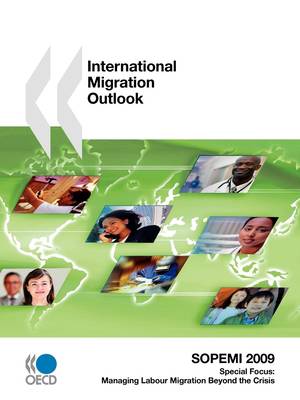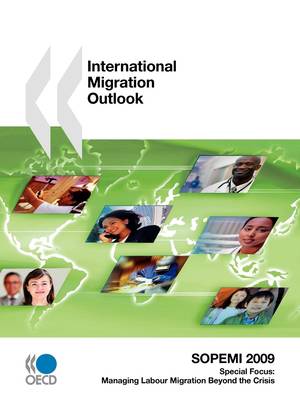
- Afhalen na 1 uur in een winkel met voorraad
- Gratis thuislevering in België vanaf € 30
- Ruim aanbod met 7 miljoen producten
- Afhalen na 1 uur in een winkel met voorraad
- Gratis thuislevering in België vanaf € 30
- Ruim aanbod met 7 miljoen producten
Zoeken
Omschrijving
Migration to OECD countries has been sharply rising over the past two decades and in recent years labour migration has significantly increased. This publication first examines the economic crisis and its impact on international migration, describes how flows and migration policy have been recently affected by the crisis, and analyses the forecast medium and long-term impact. Then, it turns to the management of labour migration, both of the highly and lesser skilled. It examines how countries should prepare now for future labour market demand and how best to redirect irregular migration into authorised channels. A dynamic link (StatLink) is provided for each table and graph. It directs the reader to a web page where the corresponding data are available in Excel(R) format. Table of contents in English -Addressing the Present, Preparing the Future PART I. INTERNATIONAL MIGRATION AND THE ECONOMIC CRISIS: UNDERSTANDING THE LINKS AND SHAPING POLICY RESPONSES -Introduction -Summary and recommendations -1. Labour market outcomes of immigrants during the economic crisis -2. Impact of the economic crisis on migration flows and policy responses -3. Medium and long-term consequences of the economic crisis -4. Impact of the crisis on migration: the perspective of origin countries -Conclusions -Annex I.A1. Quarterly Employment and Unemployment Rate (15-64 years old) by Place of Birth in Selected OECD Countries -Annex I.A2. Sectoral Distribution of Foreign-Born Employment (15-64 years old), 2007 -Annex I.A3. Sensitivity Index to the Business Cycle -Annex I.A4. Distribution of Foreign-Born and Native-Born Employment by Industry in November 2007, Observed Value and Counterfactural Variation of Foreign-Born Employment between November 2007 and November 2008, United States PART II. WORKERS CROSSING BORDERS: A ROAD MAP FOR MANAGING LABOUR MIGRATION -Summary and Recommendations -1. Introduction -2. Labour Migration: An Historical Overview -3. Irregular Migration -4. A Framework for a Labour Migration Regime -5. The Issue of Temporary versus Permanent Migration -6. Specificities in Managing Highly-Skilled Migration -7. Ensuring the Integration of Immigrants and their Children -8. Migration and Development -9 Summary and Conclusions -References
Specificaties
Betrokkenen
- Auteur(s):
- Uitgeverij:
Inhoud
- Aantal bladzijden:
- 200
- Taal:
- Engels
- Reeks:
Eigenschappen
- Productcode (EAN):
- 9789264056619
- Verschijningsdatum:
- 30/06/2009
- Uitvoering:
- Paperback
- Formaat:
- Trade paperback (VS)
- Afmetingen:
- 210 mm x 279 mm
- Gewicht:
- 512 g

Alleen bij Standaard Boekhandel
+ 95 punten op je klantenkaart van Standaard Boekhandel
Beoordelingen
We publiceren alleen reviews die voldoen aan de voorwaarden voor reviews. Bekijk onze voorwaarden voor reviews.











